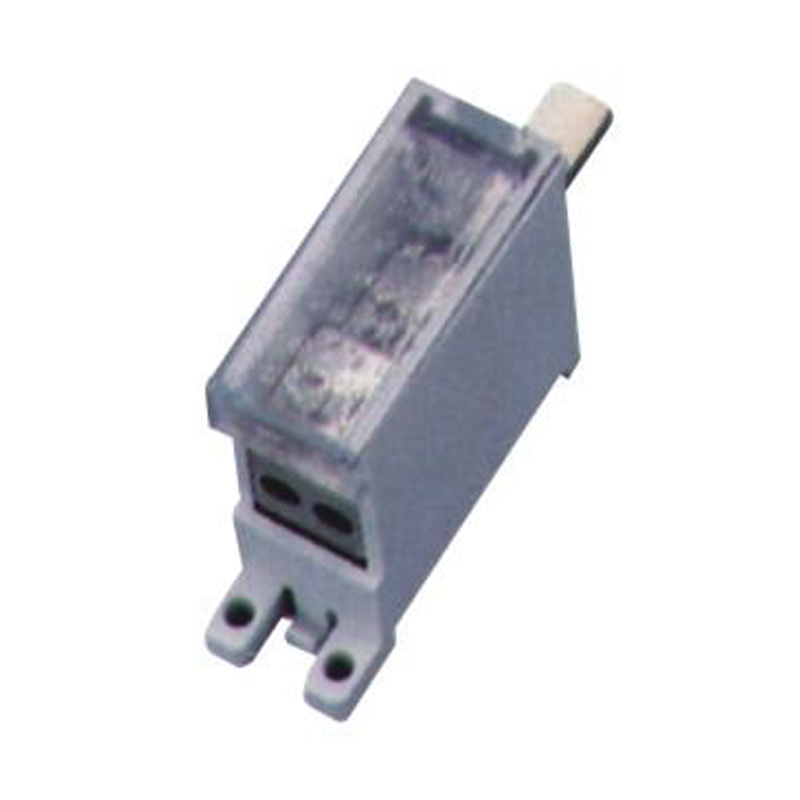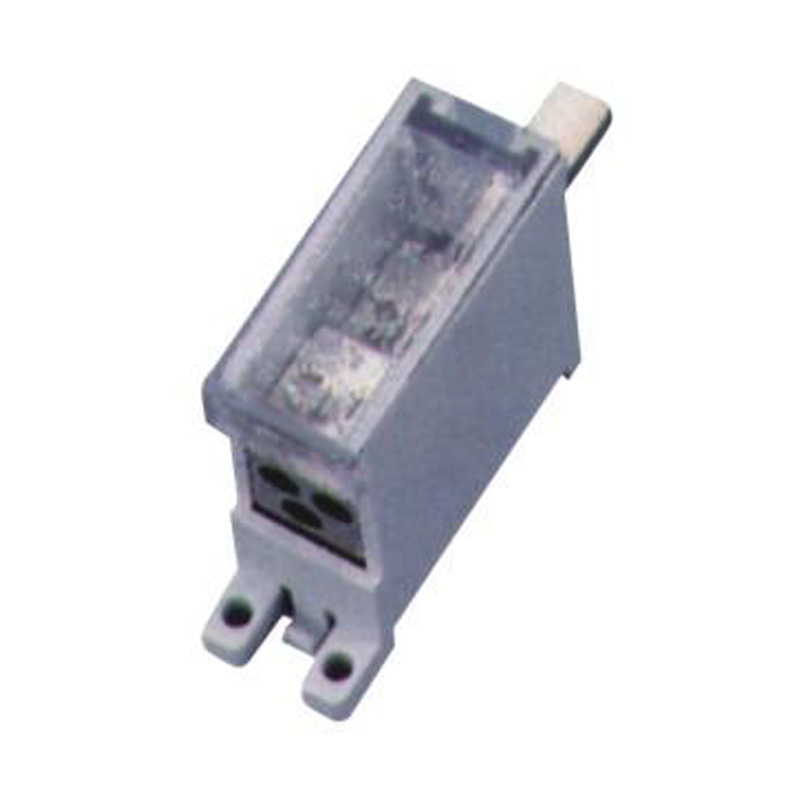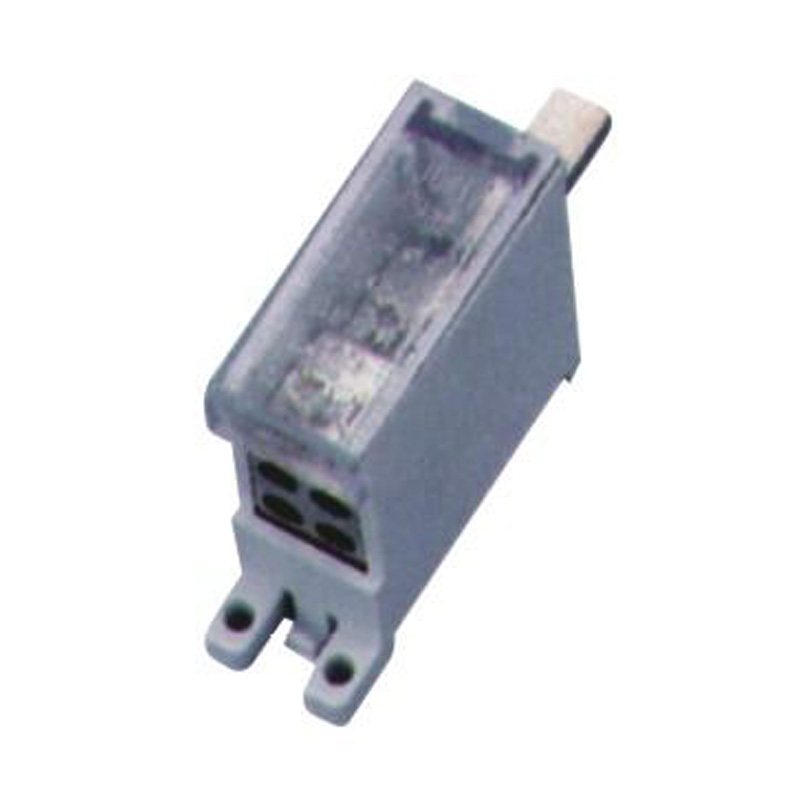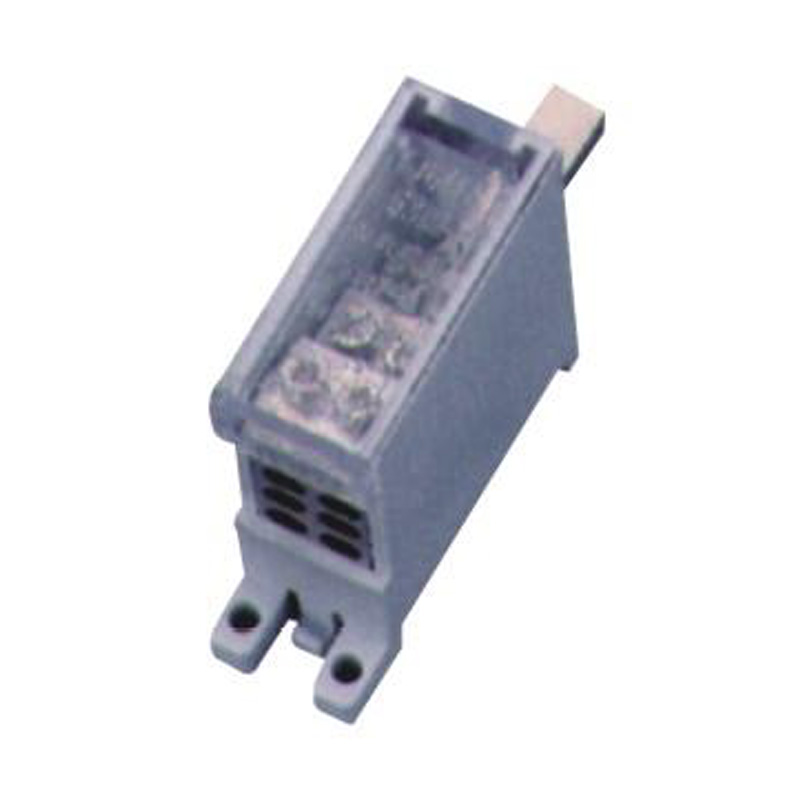In modern electrical control panels, a dual row terminal block combined with Din Rail Terminal Blocks provides an efficient soluti...
READ MOREPin-Type Incoming Line Switch Terminal Block Manufacturer
Pin-Type Incoming Line Switch Terminal Blocks are professionally used for small circuit breakers, leakage circuit breakers, air switches, etc., and are designed for wiring in complete sets of electrical distribution equipment and combined terminal electrical boxes. The insulation voltage is 690V, the rated voltage is 380V, and the pin-type inlet terminal tightly connected switches, without excessive connection of other conductors, copper or aluminum rows. It is currently a novel product with convenient and reliable multi-circuit connection of small circuit breakers or leakage circuit breakers and outlet terminals.
The Pin-Type Incoming Line Switch Terminal Block is constructed with high-quality materials that ensure durability and longevity. Its robust design withstands the rigors of continuous use in demanding industrial and commercial environments.
The design of the terminal block is user-friendly, making it easy to install and use. The plug-in and pin system allows for quick and secure connections without the need for additional tools, reducing installation time and potential errors.
The terminal block is made from materials with high electrical conductivity, ensuring efficient transfer of electrical current and less energy loss. This feature is crucial for maintaining the performance of the air switch and the overall electrical system.
Safety is important in electrical systems, and the Pin-Type Incoming Line Switch Terminal Block is designed with multiple safety features. It includes built-in dielectric protection to prevent electrical arcs and short circuits, safeguarding both the system and the personnel.
FJ6/47/2x10 Switch Teriminal Block
FJ6/47/2x10
One-inlet, two-outlet
Inlet wire:(type 63)pin type,outlet wire:1.5-10mm²
Order number:150874
FJ6/47/3x10 Switch Teriminal Block
FJ6/47/3x10
One-inlet, three-outlet
Inlet wire:(type 63)pin type,outlet wire:1.5-10mm²
Order number:150875
FJ6/47/4x10 Switch Teriminal Block
FJ6/47/4x10
One-inlet, four-outlet
Inlet wire:(type 63)pin type,outlet wire:1.5-10mm²
Order number:150876
FJ6/47/6x10 Switch Teriminal Block
FJ6/47/6x10
One-inlet, six-outlet
Inlet wire:(type 63)pin type,outlet wire:1.5-10mm²
Order number:150877
Search
Categories
-
Energy Measuring Terminal Block(314)
- Energy Measuring Joint Terminal Block(16)
- Polycarbonate Energy Measuring Terminal Block(24)
- Standard Wiring Energy Measuring Terminal Block(4)
- Transparent Shell Energy Measuring Terminal Block(6)
- Multifunctional Test Energy Measuring Terminal Block(10)
- Intelligent Safety Energy Measuring Terminal Block(6)
- Single-Phase Multi-Circuit Output Terminal Block(12)
- Self-Elevating Metering Box Terminal Block(7)
- One Household One-Meter Meter Box Dedicated Terminal Block(56)
- Three-Phase Metering Box Dedicated Terminal Block(24)
- Repeatable Grounding Line Terminal Block(20)
- Terminal Block for One-Inlet Multi-Outlet Metering Box(15)
- Closed Terminal Block(11)
- Heavy Current Terminal Block(48)
- Self-Boosting Terminal Block(5)
- Intelligent Self-Locking Terminal Block(3)
- Tool-Free Crimping Type Terminal Block(5)
- Wide Range of Wire Diameters Terminal Block(5)
- Combined Type Energy Measuring Terminal Block(37)
-
Switch Terminal Block(55)
- Pin-Type Incoming Line Switch Terminal Block(4)
- Multi-Way Connection Switch Terminal Block(4)
- Plug-pin Switch Terminal Block(7)
- Combined Type Switch Terminal Block(7)
- High Contact Cross Section Switch Terminal Block(7)
- Wide Range Switch Terminal Block(11)
- One Way in Switch Terminal Block(12)
- Equipped with Circuit Breaker Switch Terminal(3)
-
Heavy-current Terminal Block(631)
- Modular Building Block Terminal Block(156)
- Spherical Non-Destructive Crimp Terminal(120)
- Dual-Mode Connection Electrical Terminal(90)
- Anti-Electricity-Theft Terminal Block(74)
- Convenient Connection Terminal Block(12)
- High-Contact Section Terminal Block(12)
- Wide Range of Wire Diameters Neutral Line Terminal(9)
- Heavy-Current Neutral Line Terminal(9)
- Upper and Lower Rows of Neutral Terminal(2)
- Independent Neutral Line Terminal(7)
- Nose-Type Neutral Line Terminal(7)
- Rail Type Neutral Line Terminal(9)
- Fixed Neutral Line Terminal(12)
- Double Rail Assembly Electrical Terminal(19)
- Blue Jack-Up Terminal(6)
- Black Base Copper Bar Terminal(5)
- Compact Terminal Block(16)
- Precision Terminal Block(23)
- U-Shaped Harpoon Terminal(2)
- Grounding Metering Box Terminal Block(12)
- High-Performance Terminal Block(19)
- Multifunctional Terminal Block(10)
- Din Rail Terminal Block(76)
- Watt-hour Meter Connector(49)
-
Energy Meter Accessories(116)
-
-
As electrical systems become more advanced, the demand for more reliable, durable, and efficient components grows. Connectors Term...
READ MORE -
Ensuring that connector terminals are properly installed is critical for the long-term performance and reliability of any electric...
READ MORE -
Selecting the correct terminal is essential for the stability and efficiency of any electrical system. For professionals in the el...
READ MORE -
Electrical systems rely on high-quality components for safe, efficient, and reliable operation. One such crucial element is the co...
READ MORE -
Using the right junction box and circuit breaker block junction box can bring more than safety — it can significantly improve inst...
READ MORE
How to Choose the Right Pin Type Incoming Line Switch Terminal Block?
1. Matching the Application Requirements
Pin type incoming line switch terminal blocks are available in various current and voltage ratings. Selecting the right one starts with understanding the operating conditions. For low-voltage control circuits, a smaller unit may be sufficient, while for power distribution systems, higher-rated models are necessary. The number of poles, pin spacing, and mounting style should also match the system layout. Ensuring this alignment prevents mismatches and makes future maintenance easier.
2. Considering Wire and Pin Compatibility
Different projects may use wires of varying thicknesses. A suitable terminal block must accommodate the required wire cross-sectional area. At the same time, the pin dimensions should correspond to the connector or PCB design. Secure clamping of the wire reduces the risk of loose connections, ensuring consistent performance. Taking note of these details helps create a stable and reliable installation.
3. Evaluating Material and Construction
The durability of a terminal block is often influenced by the materials used. Conductive parts made of copper alloys provide good conductivity, while insulating housings of quality plastics ensure safety. Some designs also incorporate features like anti-vibration clamps or heat-resistant components, which are useful in demanding environments. Choosing robust materials guarantees longer service life.
4. Checking Installation and Maintenance Features
Ease of installation is another important factor. Pin type terminal blocks that allow straightforward wiring and secure fastening save time during assembly. Clear markings, accessible screws, and compact layouts all contribute to smoother handling. For projects that may require regular inspections, choosing a terminal block designed for easy re-connection is beneficial.
In short, selecting the right pin type incoming line switch terminal block involves evaluating application needs, wire compatibility, materials, and installation features. Careful consideration ensures a safe, efficient, and long-lasting solution.
What are the Differences Between PCB Terminal Blocks and PCB Connectors?
When designing or assembling electronic systems, two commonly used components are PCB terminal blocks and PCB connectors. Both serve as interfaces between wires and printed circuit boards, but they are not identical. Understanding their distinctions helps in choosing the right option for specific projects.
1: PCB Terminal Blocks
PCB terminal blocks are designed to allow direct connection of wires to a printed circuit board. They often feature screw or spring-clamp mechanisms that securely fasten the wire in place. One of their main benefits is flexibility: users can connect and disconnect wires without soldering, which makes them highly convenient for systems that may require frequent wiring changes.
These terminal blocks are available in various pitches, current ratings, and configurations, allowing engineers to select the model that suits their design. Their secure clamping also ensures stable electrical performance, even in applications subject to vibration or load fluctuations. Industries such as industrial automation, power control, and communication equipment frequently use PCB terminal blocks for their durability and practicality.
2: PCB Connectors
PCB connectors, on the other hand, are usually designed for plug-and-socket style connections. Instead of fastening wires directly, they often involve pre-terminated cables or connector housings that mate with the PCB-mounted part. This design is advantageous when components need to be disconnected and reconnected quickly, such as in modular systems or consumer electronics.
PCB connectors provide neat, repeatable connections and are often preferred for compact designs. They come in many types, such as headers, sockets, and edge connectors, each serving different requirements. Compared to terminal blocks, they may not offer the same flexibility for bare-wire connection but excel in environments where structured, modular cabling is needed.
Summary: The main difference is that PCB terminal blocks focus on direct wire-to-board connections with secure fastening, while PCB connectors are better suited for modular plug-and-play setups. The choice between them depends on whether the project values flexible wiring or quick, repeatable connections.



 English
English Español
Español عربى
عربى









